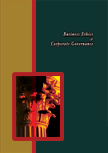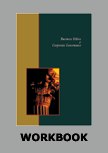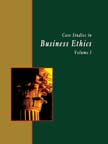Honda's Environmentology
|
|
ICMR HOME | Case Studies Collection
Case Details:
Case Code : BECG069
Case Length : 21 Pages
Period : 1991-2006
Pub Date : 2007
Teaching Note :Not Available
Organization : Honda Motor Co. Ltd.
Industry : Auto and Ancillaries
Countries : Worldwide
To download Honda's Environmentology case study
(Case Code: BECG069) click on the button below, and select the case from the list of available cases:

OR

Buy With PayPal
|
Price:
For delivery in electronic format: Rs. 400;
For delivery through Shipping & Handling Charges extra: Rs. 400 +Shipping & Handling Charges extra
»Business Ethics Case Studies
» Case Studies Collection
» ICMR Home
» View Detailed Pricing Info
» How To Order This Case
» Business Case Studies
» Case Studies by Area
» Case Studies by Industry
» Case Studies by Company
Please note:
This case study was compiled from published sources, and is intended to be used as a basis for class discussion. It is not intended to illustrate either effective or ineffective handling of a management situation. Nor is it a primary information source.
Chat with us

Please leave your feedback

|
|




<< Previous
Introduction Contd...
However, even as its pro-environment policy was being applauded, there were
reports that there was dissatisfaction among customers as far as the reliability
of Honda's hybrid cars was concerned.
Also, despite its claims of being at the forefront of low-emission technology,
some of Honda's Sports Utility Vehicles (SUV) ranked below other brands in
emissions and fuel economy.
And in spite of Honda's claims of being an "environmental leader", its arch
rival, Toyota, was perceived to be more environmentally conscious.
Background Note
|
Honda's origins date back to September 1946, when Soichiro Honda (Soichiro), a
mechanic by profession, started the Honda Technical Research Institute (HTRI) in
Hamamatsu, Japan, where he and 12 employees worked on modifying engines
developed by the Mikuni Shoko Company, which were then used to power bicycles.
He soon launched a two-stroke 50 cc modified engine (called a bicycle auxiliary
engine), which went on to become quite popular, with buyers from Tokyo, Osaka,
Nagoya, and other major cities. In 1947,
the institute started developing Honda engines and introduced its first
product, the Honda A-Type - a cycle fitted with a Honda engine.
|

|
In September 1948, the HTRI was incorporated as Honda Motor Co. Ltd. In
1949, the Dream D-Type was launched. This model was not a motorized
bicycle, but a motorcycle. In 1951, the E-type, Honda's first motorcycle
powered by a four-stroke engine, was introduced. In April 1952, Honda
shifted its headquarters from Hamamatsu to Tokyo.
|
|
That year, it began to
expand its dealer network. In June 1952, when the Cub F-type was
launched, the company decided to exploit the hitherto untapped bicycle
dealer network for this model. The Cub F-Type was a huge success. In
1952, Honda imported machine tools from the US, Germany, and Switzerland
so as to manufacture all the components that went into its motorcycles.
It also bought and renovated an old factory in Saitama Prefecture, to
produce components. With this, production capacity increased
significantly. In April 1953, the Cub FII-Type was launched, which was
followed by the Benly J-Type in August 1953. In 1953, Honda's first
power product7, the H-Type engine,
was launched... |
Excerpts >>
|
|









